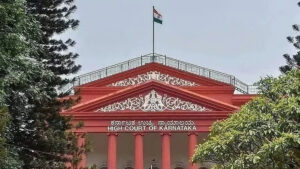A devastating two-wheeler crash in Bengaluru claimed the lives of two young individuals and left another critically injured, casting a somber shadow over the city’s bustling streets. The incident, which occurred near Kengeri Upanagara on the Bengaluru-Mysuru Highway, involved a high-speed collision between two motorcycles, highlighting the persistent dangers of reckless driving and inadequate road safety measures in Karnataka’s capital. This tragedy has sparked renewed calls for stricter enforcement, better infrastructure, and increased public awareness to prevent such losses. Below is a detailed exploration of the incident, its context, and the broader implications for Bengaluru’s road safety landscape.
The accident took place around 6 p.m. when three friends, all in their early twenties, were riding two motorcycles along the busy Bengaluru-Mysuru Highway. According to police reports, the victims, identified as 22-year-old Sumanth from Kengeri and 23-year-old Prajwal from Rajarajeshwari Nagar, were killed instantly when their bike collided head-on with another motorcycle ridden by 24-year-old Chethan, who sustained severe injuries. The trio was reportedly traveling at high speed, and preliminary investigations suggest that rash driving and a possible attempt to overtake contributed to the collision. The Kengeri Traffic Police, who responded promptly, registered a case of rash and negligent driving under relevant sections of the Bharatiya Nyaya Sanhita.
The Bengaluru-Mysuru Highway, a critical artery connecting Karnataka’s capital to the cultural hub of Mysuru, is notorious for its high accident rate. Despite recent infrastructure upgrades, including a 10-lane expressway completed in 2023, the stretch remains a hotspot for crashes due to speeding, heavy traffic, and inadequate adherence to traffic rules. The Kengeri Upanagara area, where the incident occurred, is particularly prone to accidents, with narrow service roads and frequent pedestrian activity exacerbating risks for two-wheeler riders. Eyewitnesses reported that the collision was so severe that both motorcycles were mangled, underscoring the intensity of the impact.
The victims, Sumanth and Prajwal, were described by family and friends as vibrant young men with promising futures. Sumanth, a recent graduate, was preparing for competitive exams, while Prajwal worked at a local tech startup, a common career path in Bengaluru’s IT-driven economy. Chethan, the survivor, is battling for his life in a nearby hospital, with doctors reporting multiple fractures and head injuries. The families of the deceased have been left devastated, with social media posts on X expressing grief and frustration over the recurring loss of young lives on Bengaluru’s roads. One user described the incident as “a preventable tragedy,” urging authorities to take decisive action.
This crash is part of a disturbing trend in Bengaluru, where two-wheeler accidents account for a significant portion of road fatalities. According to the Bengaluru Traffic Police, the city recorded over 900 road deaths in 2024, with two-wheelers involved in nearly 40% of cases. Speeding, failure to wear helmets, and violations like lane-cutting are common factors. In a similar incident in May 2025, a 19-year-old biker died in a collision near K.R. Puram, highlighting the persistent risks faced by young riders. The lack of helmet use, though not confirmed in the Kengeri case, is a recurring issue, with only 60% of two-wheeler riders in Bengaluru consistently wearing helmets, per a 2024 survey.
The Bengaluru-Mysuru Highway has been a focal point for road safety concerns since its expansion. While the expressway was designed to reduce travel time and improve connectivity, it has also led to increased speeding, particularly among two-wheeler riders. The service roads, meant to accommodate local traffic, are often poorly maintained, with potholes and inadequate signage contributing to accidents. In 2023, a similar crash near Mandya on the same highway claimed three lives, prompting protests by locals demanding better safety measures. The Kengeri incident has renewed calls for speed cameras, stricter patrolling, and dedicated lanes for two-wheelers.
The role of rash driving in the Kengeri crash underscores the need for better driver education and enforcement. Bengaluru’s young population, many of whom rely on two-wheelers for affordability and convenience, often engage in risky behaviors like speeding or stunt riding. Social media platforms like X have seen posts glorifying such activities, with hashtags like #BengaluruBikers showcasing high-speed rides. However, these trends come at a cost, as evidenced by the loss of Sumanth and Prajwal. Traffic police have launched awareness campaigns, such as “Ride Safe Bengaluru,” but their impact remains limited in the face of widespread non-compliance.
The Bengaluru Traffic Police have been under pressure to address the city’s road safety crisis. In 2024, they introduced automated speed detection systems and increased fines for violations, collecting over ₹50 crore in penalties. However, enforcement remains inconsistent, particularly on high-traffic stretches like the Bengaluru-Mysuru Highway. The Kengeri Traffic Police, responsible for the crash site, have stepped up patrols, but officers are stretched thin, with only 3,500 personnel managing a city of over 13 million. The Karnataka High Court, in a 2023 ruling, criticized delays in addressing road safety, urging the state to invest in technology and infrastructure to reduce accidents.
The human toll of such accidents extends beyond the immediate victims. The families of Sumanth and Prajwal are grappling with unimaginable grief, while Chethan’s loved ones face uncertainty as he fights for recovery. Community members in Kengeri have organized candlelight vigils, and local leaders have called for a review of safety measures on the highway. The emotional impact is compounded by the economic loss, as young professionals like Prajwal are often breadwinners or key contributors to their households. The tragedy has also sparked discussions about the psychological impact on first responders, who regularly witness such scenes.
Bengaluru’s rapid urbanization has exacerbated its road safety challenges. The city’s population has grown by 40% in the last decade, leading to congested roads and strained infrastructure. Two-wheelers, which account for over 50% of registered vehicles in Bengaluru, are a primary mode of transport for the middle and working classes. However, the lack of dedicated bike lanes and poor road maintenance increase risks. In 2024, a Bengaluru-based NGO reported that 70% of the city’s roads lack proper signage, contributing to accidents like the Kengeri crash.
The socio-economic context of Bengaluru adds another layer to the issue. The city’s IT boom has attracted young professionals from across India, many of whom, like Sumanth and Prajwal, rely on two-wheelers to navigate its traffic-choked streets. The pressure to succeed in a competitive environment, combined with long commutes, can lead to stress and risky driving behaviors. A 2023 study by the Indian Institute of Science found that Bengaluru’s average commuting time has increased to 45 minutes, with two-wheeler riders facing higher risks due to exposure to heavy vehicles and unpredictable traffic patterns.
The Karnataka government has taken steps to address road safety, including launching the “Safe City” initiative in 2024, which includes installing 500 additional CCTV cameras and upgrading traffic signals. However, implementation has been uneven, particularly in suburban areas like Kengeri. The Bengaluru-Mysuru Highway, despite its upgrades, lacks sufficient speed breakers and pedestrian crossings in high-risk zones. Local residents have long demanded flyovers and underpasses to reduce conflicts between vehicles and pedestrians, but progress has been slow due to bureaucratic delays.
The role of technology in addressing road safety is increasingly critical. Bengaluru’s traffic police have experimented with AI-based traffic management systems, but their rollout is limited to central areas. Speed cameras, while effective in cities like Mumbai, are underutilized in Bengaluru, with only 20% of major roads equipped. The Kengeri crash has prompted calls for real-time monitoring and stricter penalties for speeding, with activists advocating for a zero-tolerance policy. Posts on X have suggested crowd-sourcing traffic violation reports, similar to initiatives in Delhi, to improve enforcement.
The tragedy has also highlighted the need for community-driven solutions. In Kengeri, local resident associations have proposed awareness drives targeting young riders, emphasizing helmet use and safe driving practices. Schools and colleges in Bengaluru have been urged to incorporate road safety education into their curricula, with programs like “Young Riders, Safe Riders” gaining traction. These initiatives aim to address the cultural acceptance of risky driving, particularly among youth influenced by social media trends.
The medical response to the crash underscores the challenges of emergency services in Bengaluru. Chethan was rushed to a nearby hospital, but delays in ambulance services, a common issue in the city, can mean the difference between life and death. In 2024, a report by the Karnataka State Health Department noted that only 60% of emergency calls receive an ambulance within 15 minutes, with suburban areas like Kengeri particularly underserved. The government’s 108 ambulance service has been expanded, but resource constraints limit its effectiveness during peak hours.
The legal aftermath of the crash will likely focus on determining accountability. The Kengeri Traffic Police are investigating factors like speed, road conditions, and possible intoxication, though no evidence of the latter has been reported. The case under the Bharatiya Nyaya Sanhita will examine whether the riders’ actions constituted gross negligence, potentially leading to stricter penalties. Past cases, such as a 2023 Bengaluru crash where a speeding biker was fined ₹50,000, suggest that courts are taking a tougher stance on rash driving, but systemic change remains elusive.
The crash has also drawn attention to the psychological impact on survivors and witnesses. Chethan’s recovery, if he survives, will likely involve not just physical healing but also addressing the trauma of the incident. Community support groups in Bengaluru have emphasized the need for counseling for accident survivors and their families, a service that is currently limited. NGOs like the Bengaluru Road Safety Forum have called for trauma centers at major hospitals to address both physical and mental health needs post-accidents.
The incident has sparked broader discussions about Bengaluru’s urban planning and its impact on road safety. The city’s haphazard growth, with residential areas like Kengeri expanding rapidly, has outpaced infrastructure development. The Bengaluru-Mysuru Highway, while a flagship project, has been criticized for prioritizing speed over safety, with insufficient measures to protect two-wheeler riders. Urban planners have suggested redesigning high-risk stretches with dedicated bike paths and better lighting to reduce accidents.
The tragedy has also highlighted the role of gender in road safety, as all three victims were young men, a demographic overrepresented in two-wheeler accidents. A 2024 study by the National Crime Records Bureau noted that men aged 18–30 account for 70% of road deaths in Karnataka, often due to risk-taking behaviors like speeding. Addressing this requires targeted campaigns that challenge societal norms around masculinity and reckless driving, a topic gaining traction on X, where users have called for “safe riding as the new cool.”
The crash has also prompted comparisons to other urban centers in India. Cities like Chennai and Hyderabad have implemented successful road safety measures, such as mandatory helmet laws and speed governors, that Bengaluru could emulate. In 2023, Chennai reduced two-wheeler fatalities by 15% through aggressive enforcement and public campaigns. Bengaluru’s slower progress, despite its status as a tech hub, has frustrated activists who argue that the city’s resources should translate into better safety outcomes.
The incident has also underscored the economic impact of road accidents. Beyond the personal loss, crashes like the one in Kengeri strain public resources, from emergency services to healthcare costs. The Karnataka government spends over ₹500 crore annually on accident-related expenses, yet preventive measures remain underfunded. The Kengeri crash, occurring on a major economic corridor, highlights the need for investment in safety infrastructure to protect both lives and livelihoods.
The tragedy has also sparked debates about the role of technology in two-wheelers. Modern motorcycles, often equipped with high-performance engines, appeal to young riders but increase the risk of accidents when misused. Manufacturers have been urged to incorporate safety features like speed limiters and anti-lock braking systems as standard, but cost considerations have slowed adoption. The bikes involved in the Kengeri crash, though not specified, were likely standard models, raising questions about whether advanced safety features could have mitigated the outcome.
The Kengeri crash is a stark reminder of the human cost of road safety failures in Bengaluru. As the city mourns the loss of Sumanth and Prajwal and prays for Chethan’s recovery, the incident serves as a call to action for authorities, communities, and individuals. Addressing the root causes—speeding, inadequate infrastructure, and societal attitudes—requires a multi-faceted approach that combines enforcement, education, and empathy to ensure that Bengaluru’s roads become safer for all.
Sponsored
FACTS Transcripts
Apply for a University document anywhere
https://www.factstranscript.com
Quick Transcripts for popular Universities, check your University name now and get started. We help you to get your transcript application online which is accepted for use of IRCC.
No DD, NO Paperwork. 100% Authentic, Reliable.
FACTS Transcripts Charges · Reviews · Assam Universities · Home · Know your University









